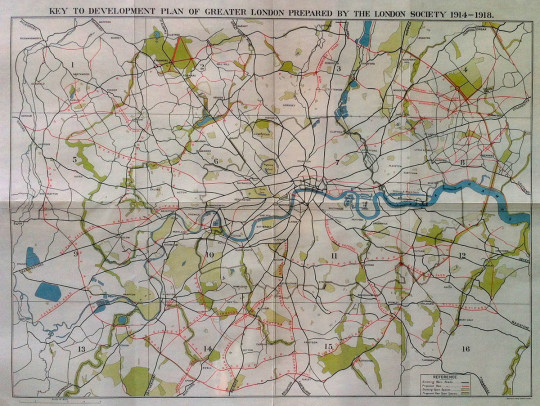
Before Abercrombie and Forshaw, with their 1943 and 1944 plans for modernising London , with new ring roads, ‘zoned’ areas and satellite new towns, there was the London Society’s Development Plan.
Put together between 1914 and 1918 (the coincidence that both plans were the product of wartime is interesting), the Society’s plan grew out of a widespread feeling in the early part of the 20th Century that London had grown too much, too rapidly and without any overall supervision. At the RIBA Town Planning Conference in 1910, William Riley, architect of the London County Council, said that London was “one of the most costly examples of the evils resulting from the lack of proper [planning]”.
From the 1910 conference came the London Society, its founder members including Riley, Sir Aston Webb (architect of the front of the V+A and the processional route along the Mall), Raymond Unwin (the architect-planner of Hampstead Garden Suburb and Letchworth Garden City) and a wide array of other architects and planners (including the splendidly named Arthur Beresford Pite)., politicians, newspaper moguls and businessmen.
Identifying transport infrastructure as key to the capital (plus ca change) the Society proposed that one body should be responsible for developing the arterial roads into and across the city, and its 1918 plan proposed a whole new network of main roads, by passes, the north and south circular and a new orbital road way that prefigures the M25 by several decades.
Allied to this were proposals for “new parks, parkways and waterside reservations”, connected by belts of green parkways, and the nationalisation of the railways to better control and coordinate the passenger and goods traffic coming into and through London.
The Plan was incredibly influential. In practical terms its concept of the ‘green belt’ was accepted and many of the roads it suggested were built, but more broadly, its idea that the growth of cities could be planned and managed with a view to making these developments better places to live and to work was widely embraced. Further plans and activity followed, and it’s fair to say that this work formed the foundation of Abercrombie’s vision.

